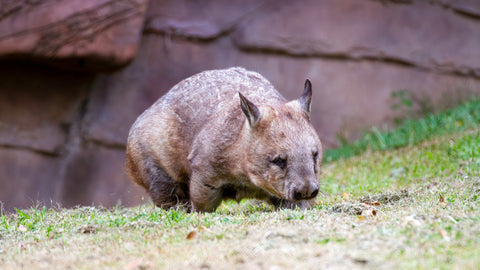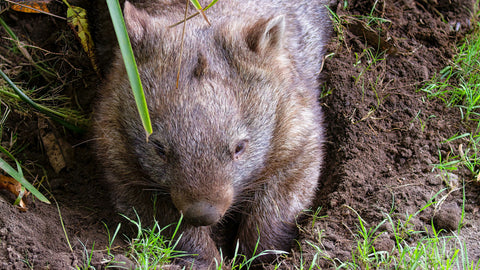The Northern Hairy-Nosed Wombat is one of the world's rarest and most critically endangered mammals. As of today, it is estimated that there are only around 315 individuals in the wild. That’s why we’re super excited to share that the Australian Wildlife Conservancy (AWC), has entered into partnership with the Queensland Government to care for one of the last two remaining populations of the critically endangered Northern Hairy-nosed Wombat in south-west Queensland. Let’s check it out!

The Agreement
In mid October 2023, AWC forged a groundbreaking agreement with the Queensland Government's Department of Environment and Science (DES) to take on the stewardship of the wombat population residing within the 130-hectare Richard Underwood Nature Refuge (RUNR), situated just 45 minutes from St George.
Notably, this marks the first occasion in which a private conservation organisation has been entrusted with the responsibility of managing a critically endangered species in collaboration with DES and the Queensland Government. This accord further extends the partnership initially established in 2021 between AWC and DES, focusing on joint research and management initiatives for the refuge's wombats.
Australian Wildlife Conservancy Plans For The Nothern Hairy-Nosed Wombat
Within this historic agreement, AWC will not only maintain but also enhance DES' existing programme at the refuge by assuming additional research and management responsibilities. This includes AWC's recent collaboration with The Wombat Foundation, employing ground-penetrating radar technology to comprehensively map and understand the wombat's burrowing system. Insights gleaned from this study are anticipated to guide the design of 'starter' burrows for future translocations of the species. AWC's initiatives also encompass conducting a population census and genetic management efforts at RUNR to formulate a comprehensive genetic management plan.
AWC is committed to the continuation of the refuge's comprehensive threat management program, focusing on safeguarding the wombats and their habitat. This programme encompasses fire and weed management, as well as feral predator and herbivore management. Maintenance efforts will ensure the continued integrity of the site's wild dog and fox exclusion fence.

Fun Facts About The Northern Hairy-Nosed Wombat
- Distinctive Appearance - These wombats are recognized by their broad noses, pointed ears, soft grayish fur, and faint black eye patches. Their appearance sets them apart from the more common Southern Hairy-Nosed Wombat.
- Burrowing Masters - Northern Hairy-Nosed Wombats are expert burrowers and spend most of their lives underground. Their burrows help them stay cool during hot Australian summers and provide protection from predators.
- Slow Reproduction - These wombats have a low reproductive rate, with females giving birth to only one joey every two to three years. This contributes to their vulnerable status.
- Habitat and Diet - They primarily inhabit open eucalypt woodlands in Australia and feed on grasses and sedges. The decline in their numbers has been associated with the loss of their preferred habitat due to grazing and competition with livestock and rabbits.
_________________________________________________________________
We’re absolutely thrilled that continued monitoring and protection efforts are in place for the Hairy-Nosed Wombat. These agreements, provide hope for the survival of this unique species and we can’t wait to see them walking around for many years to come!

